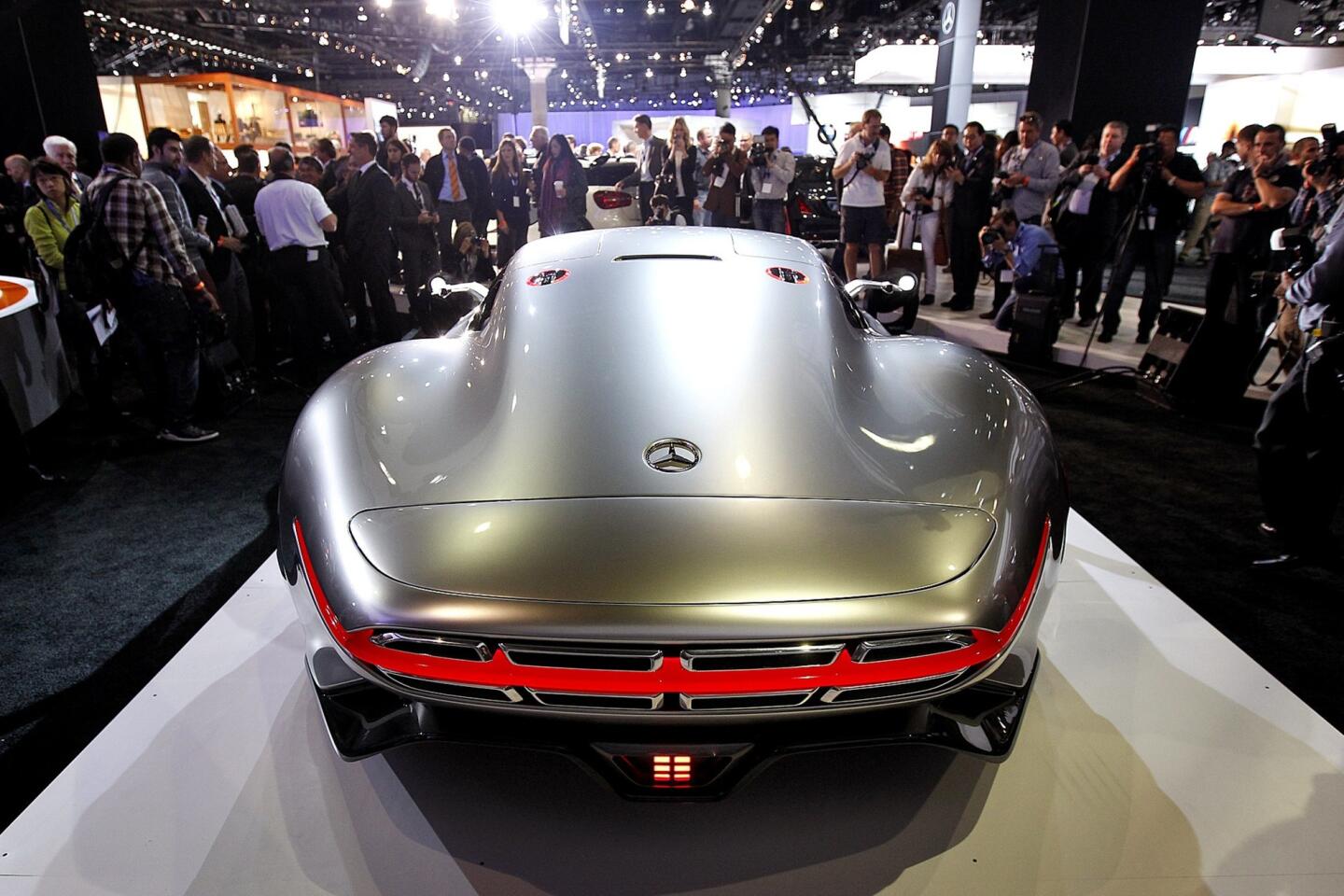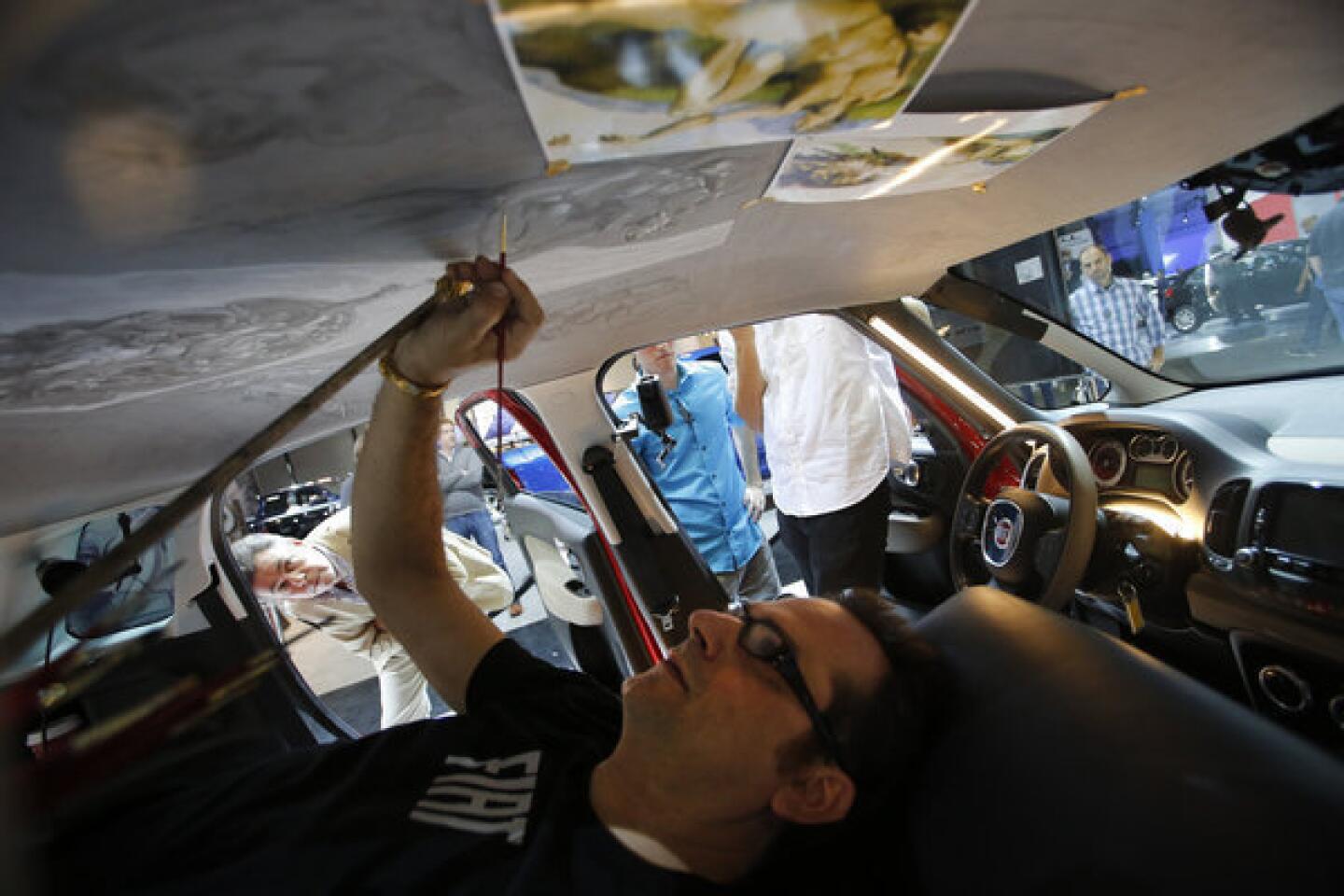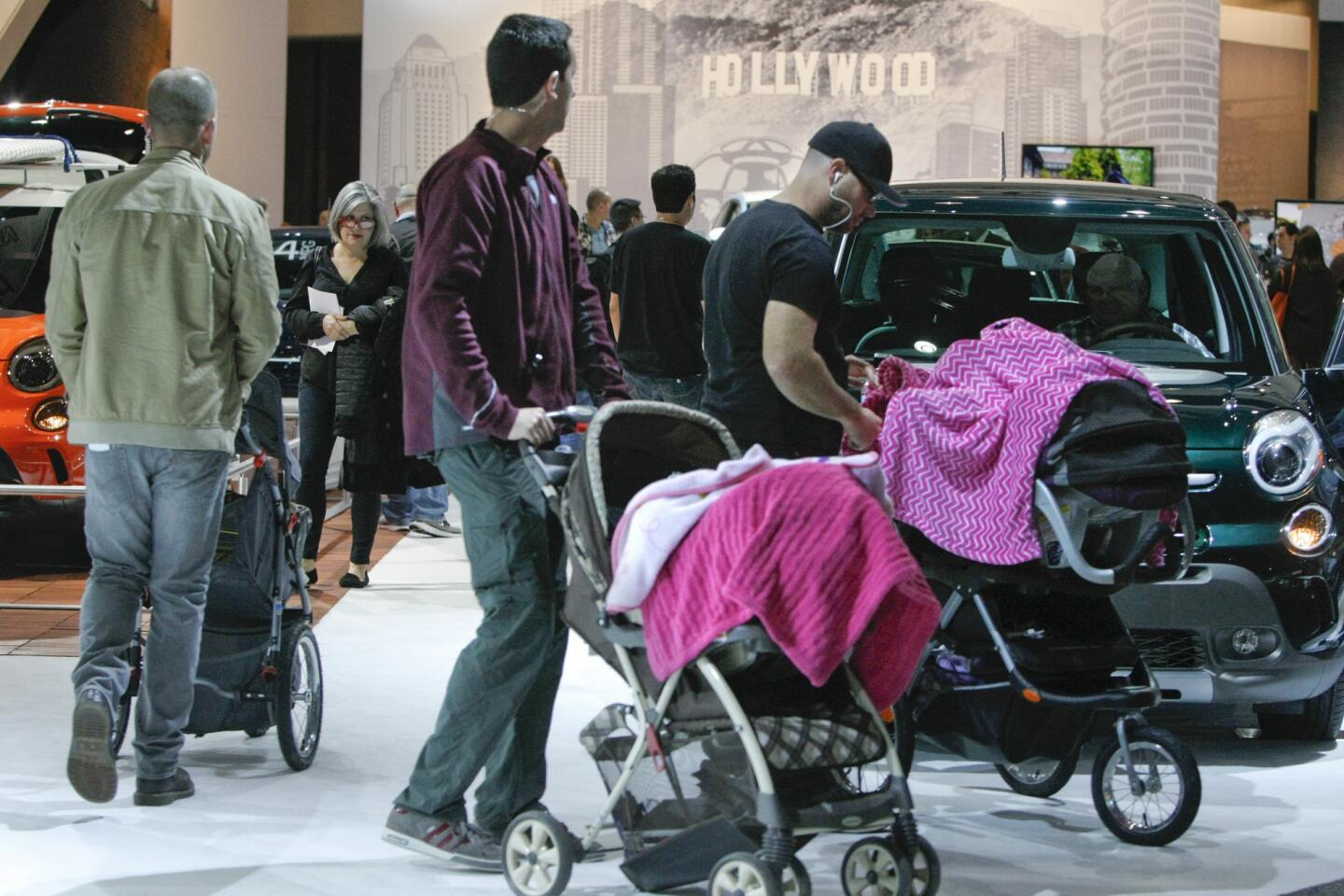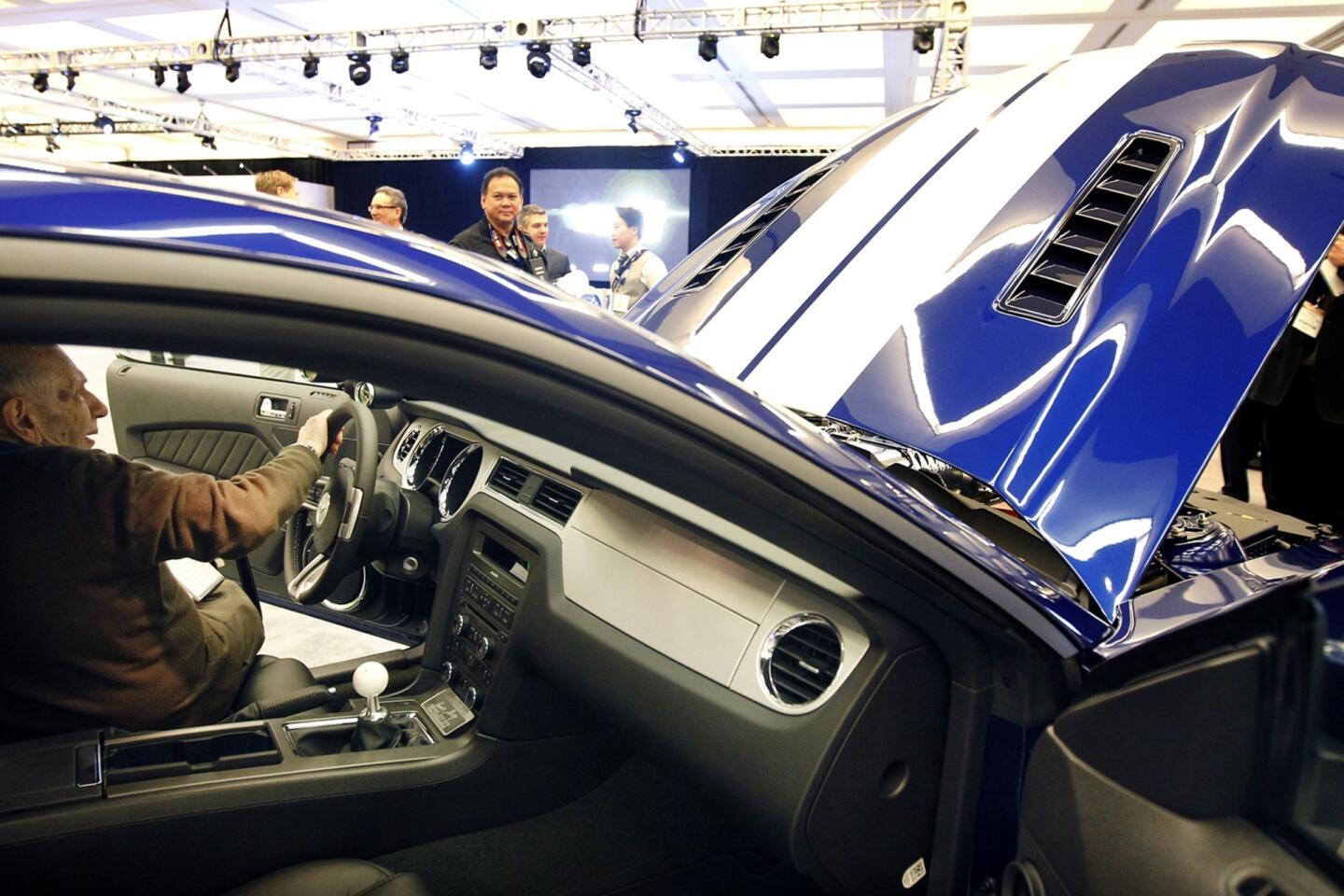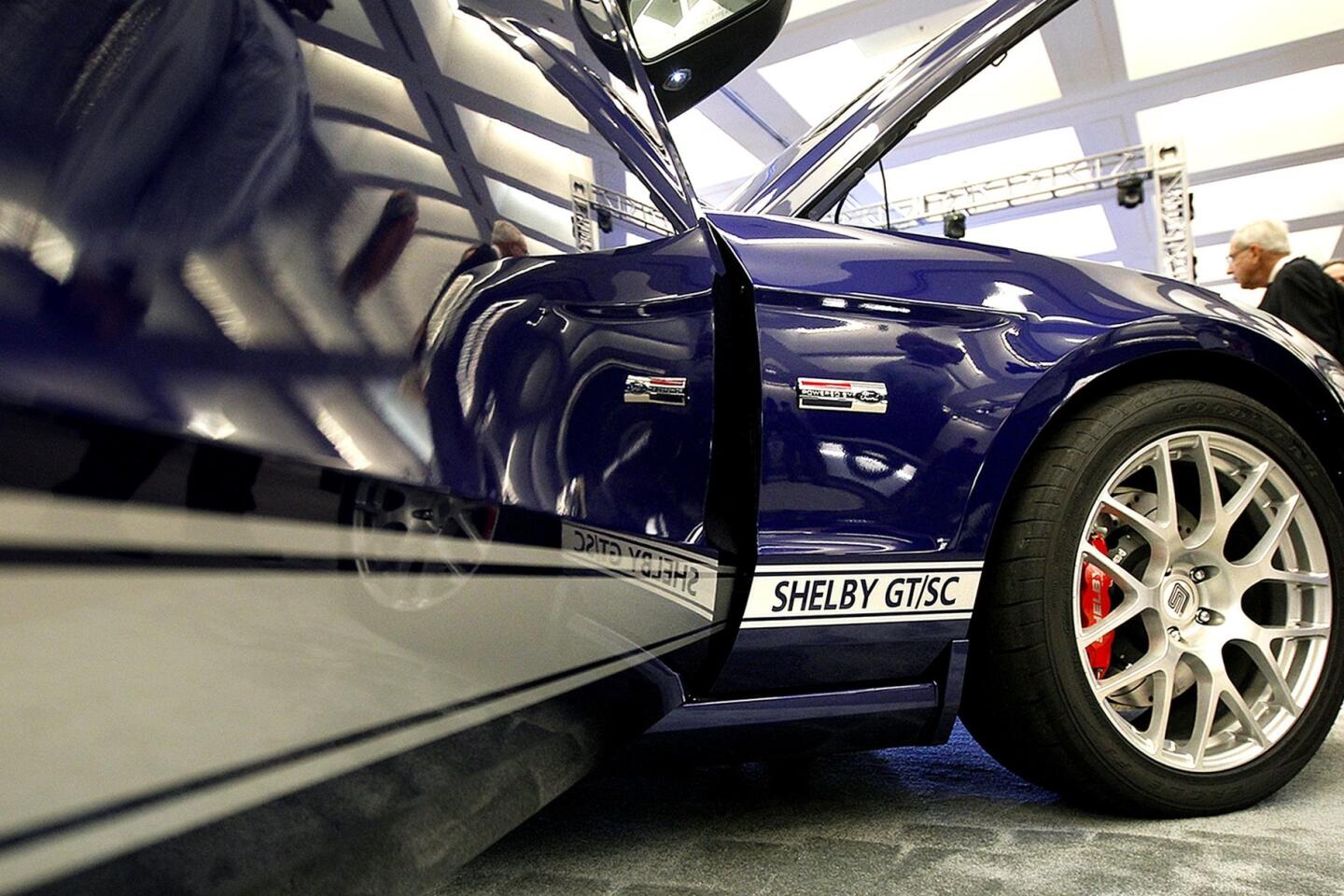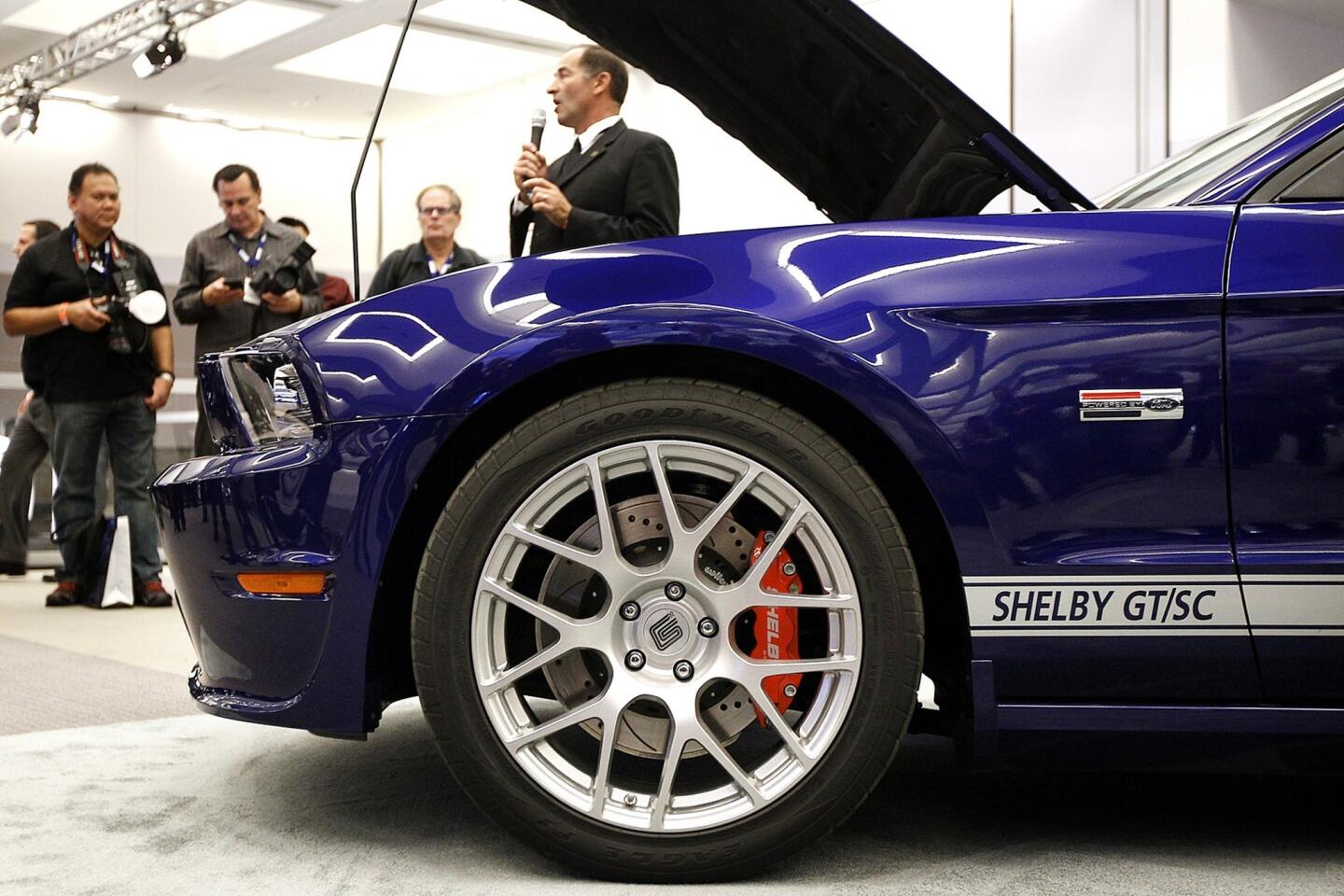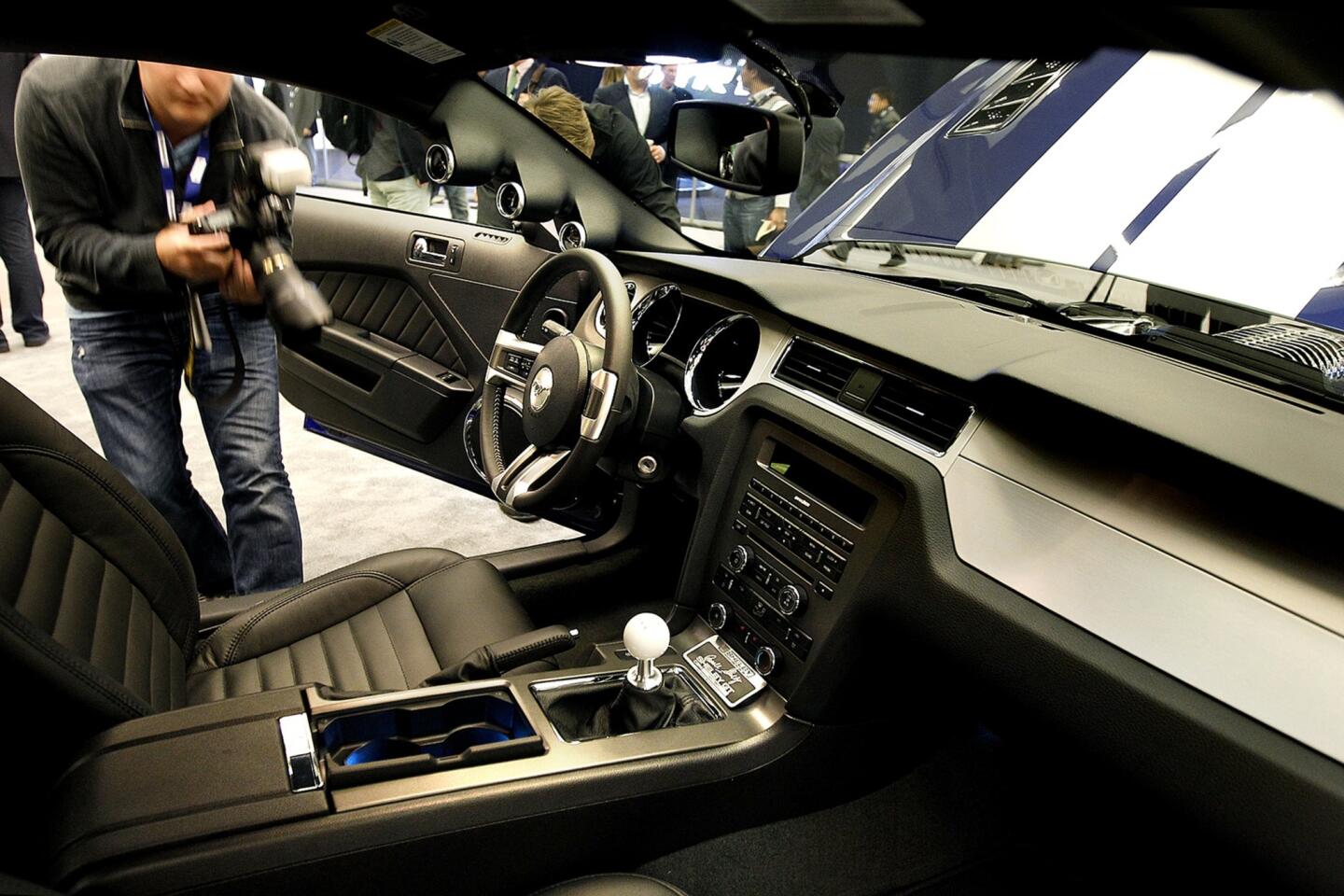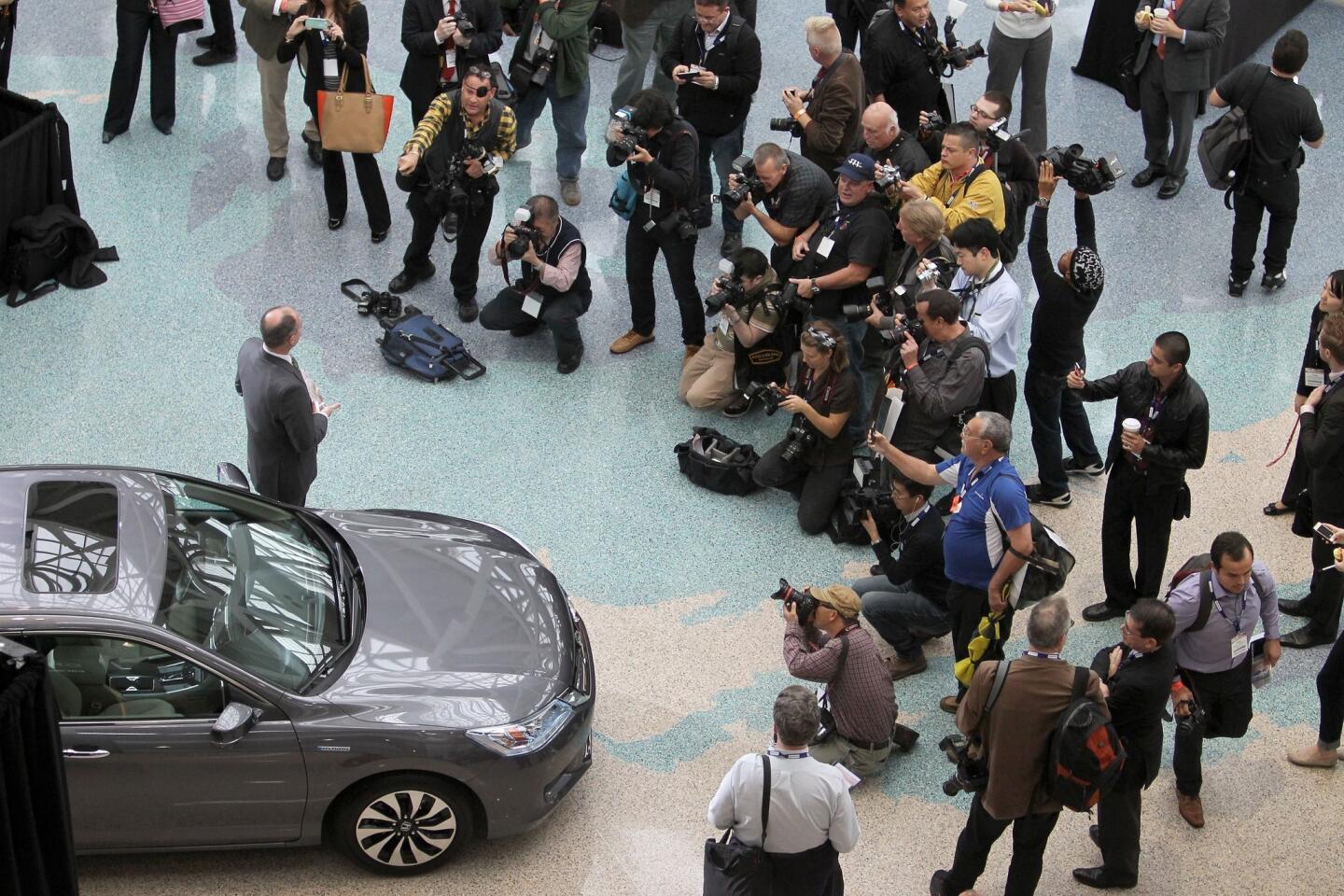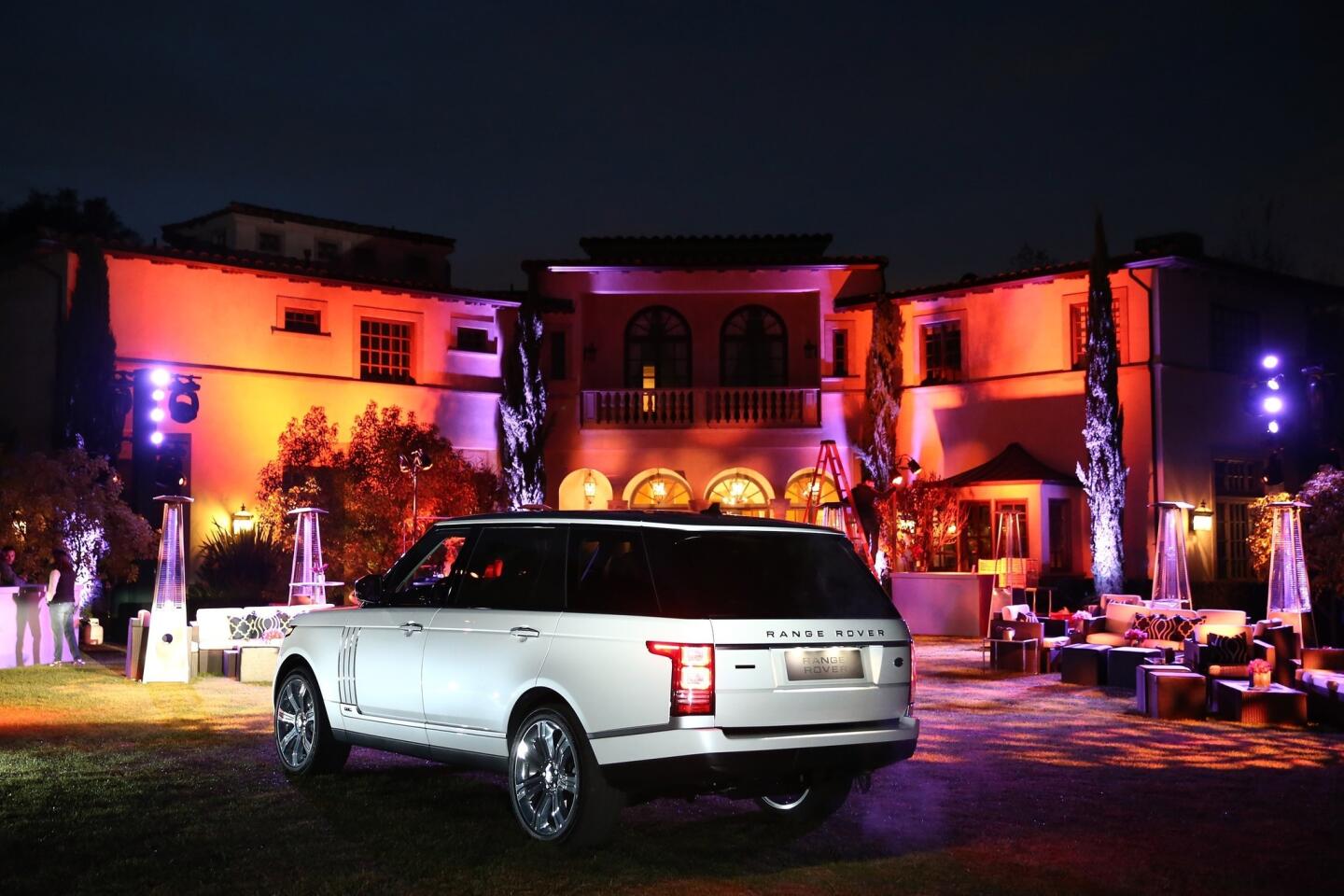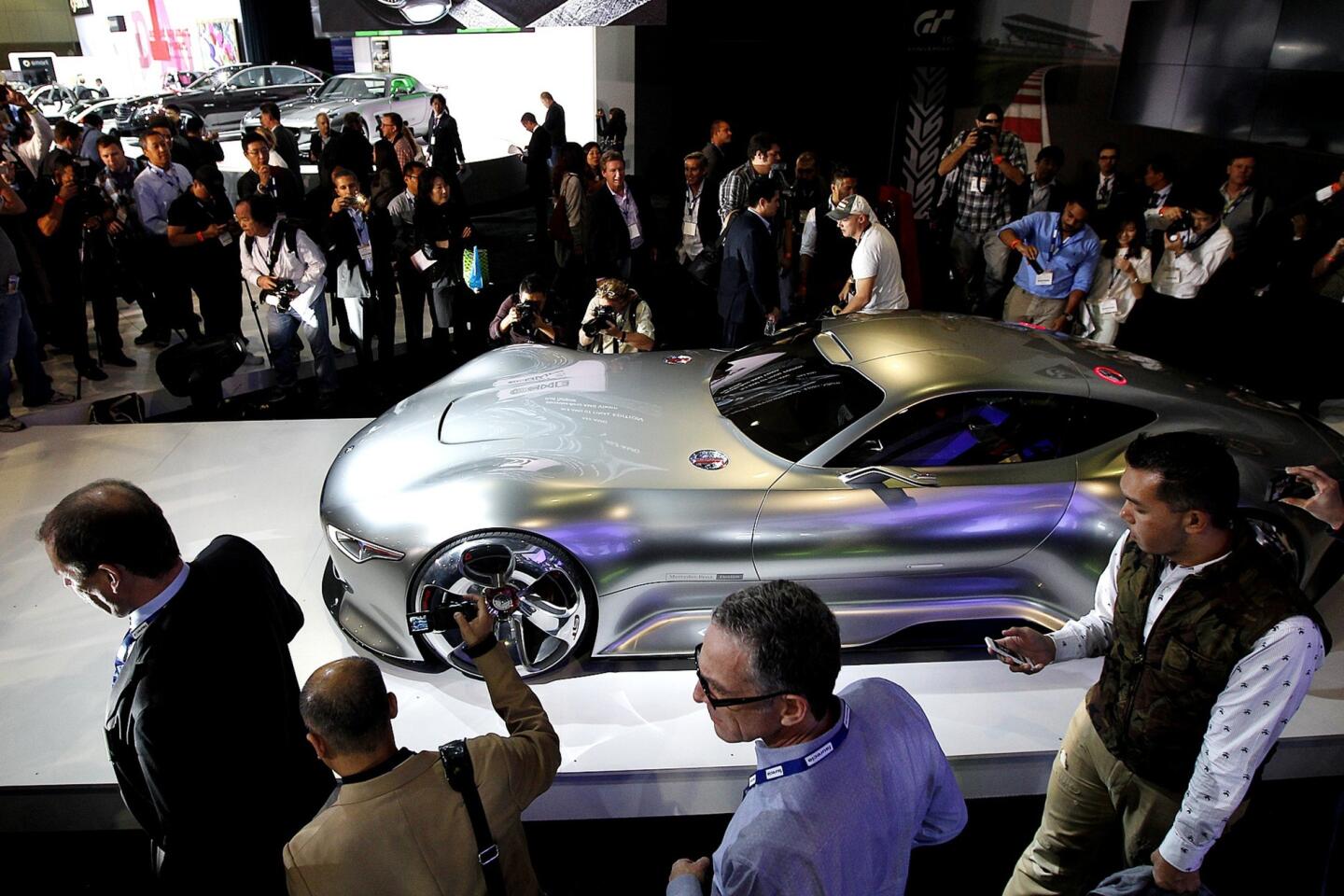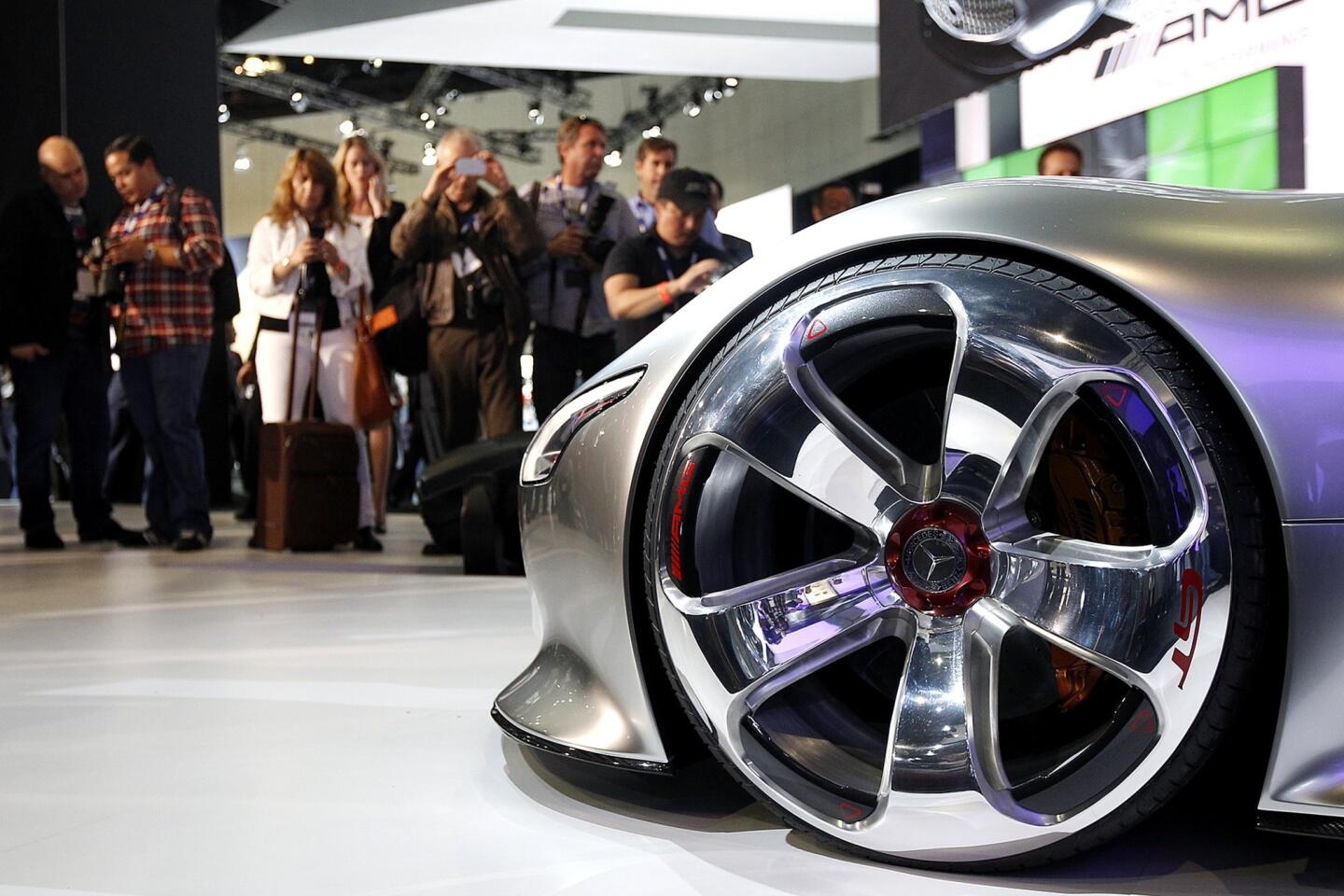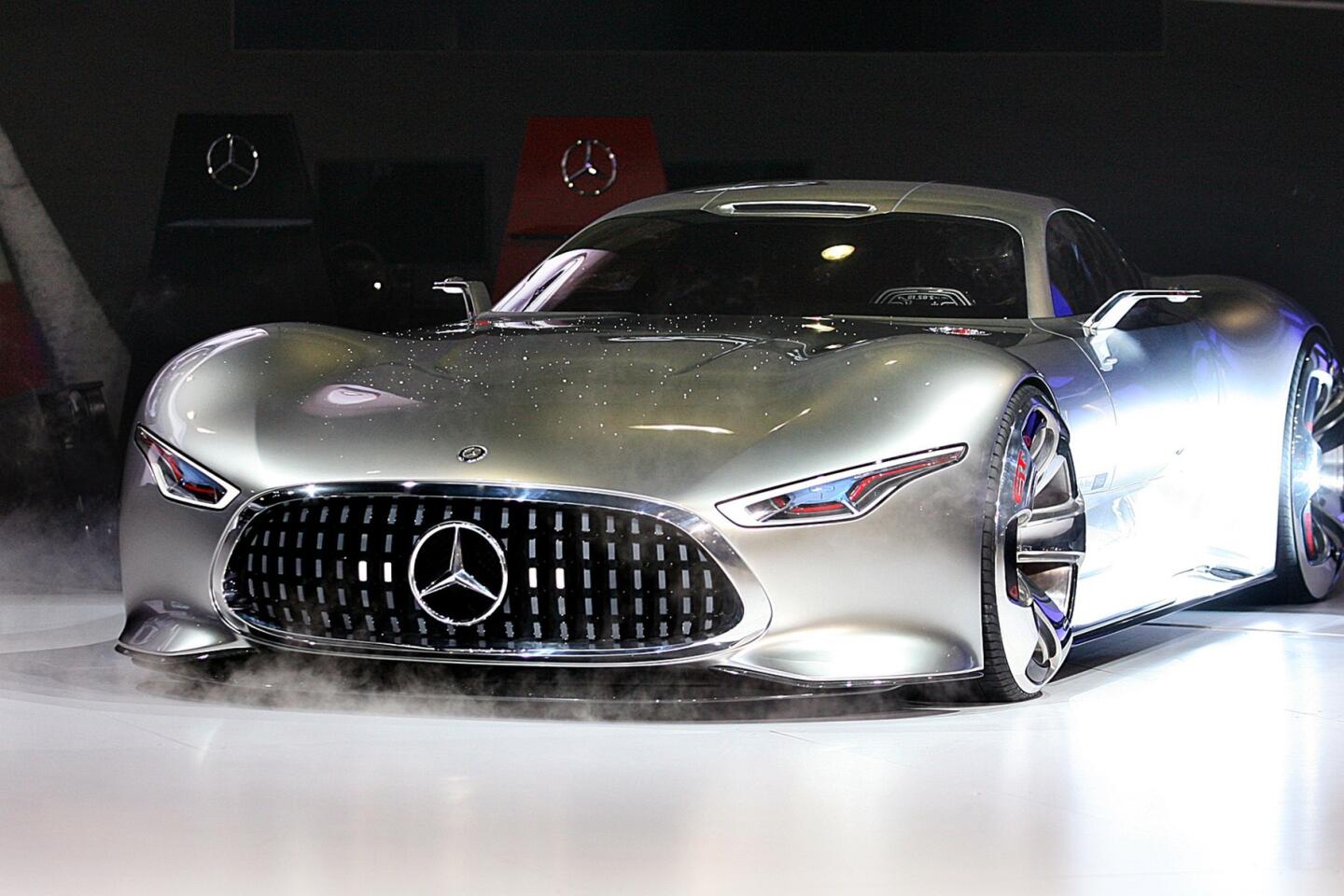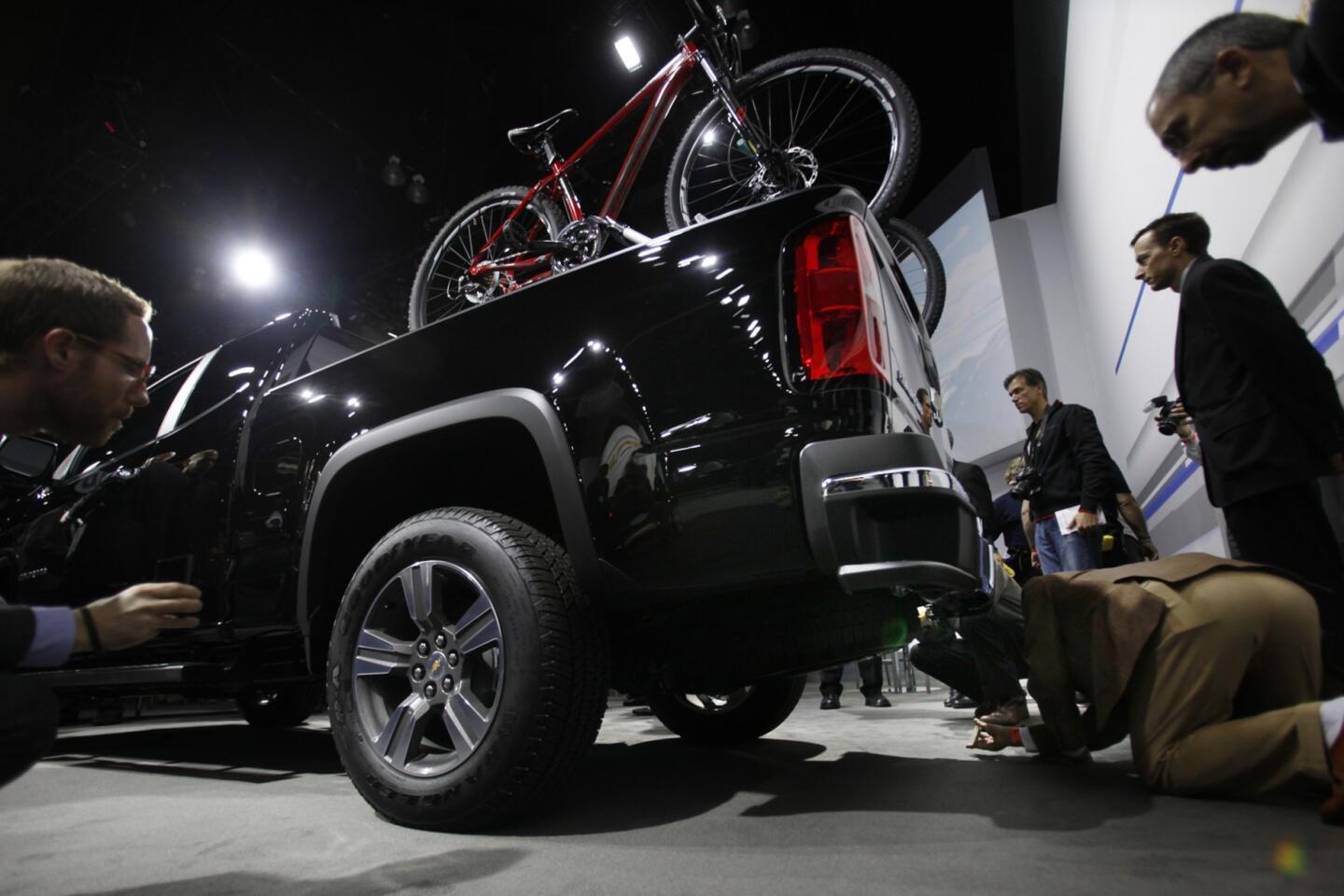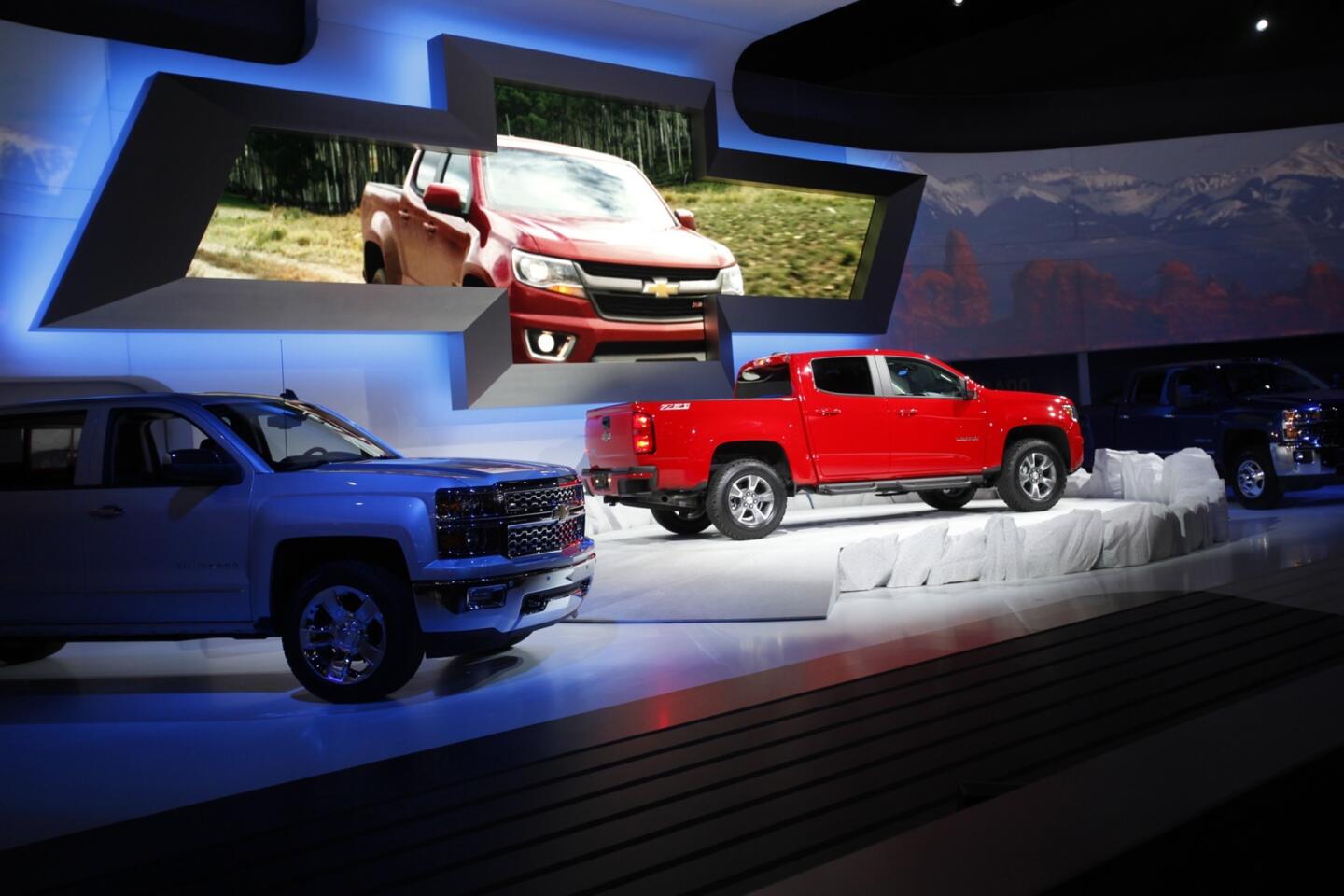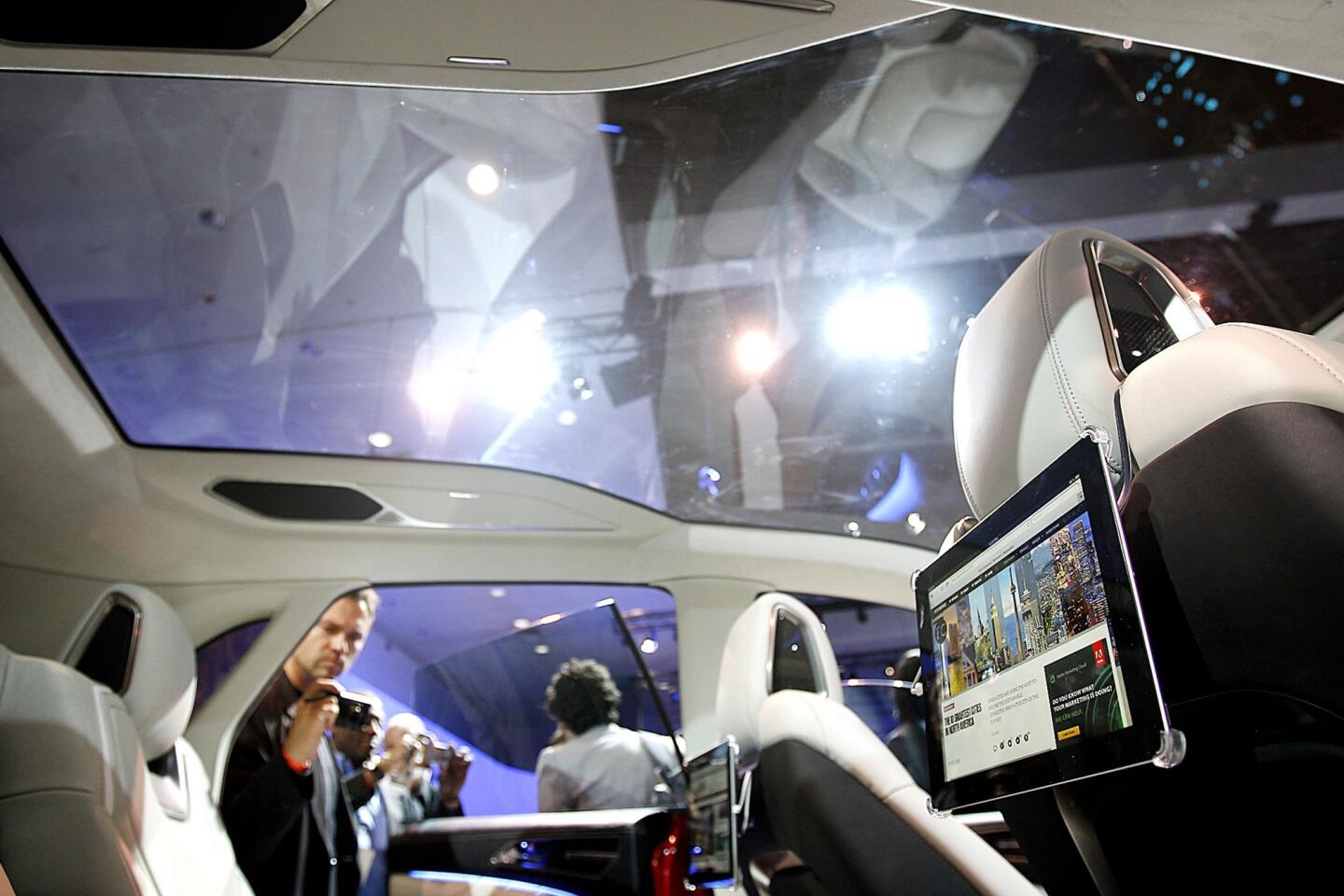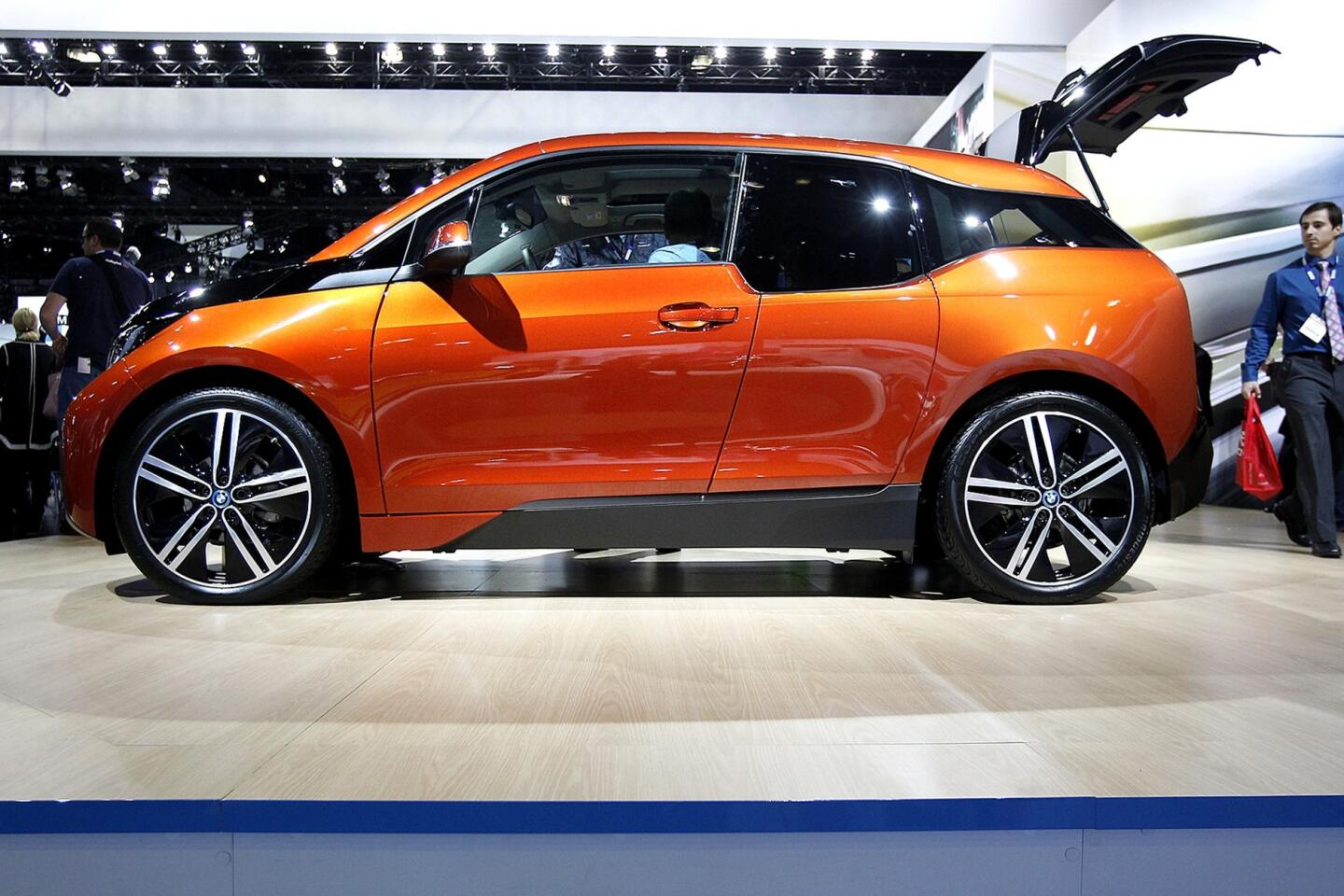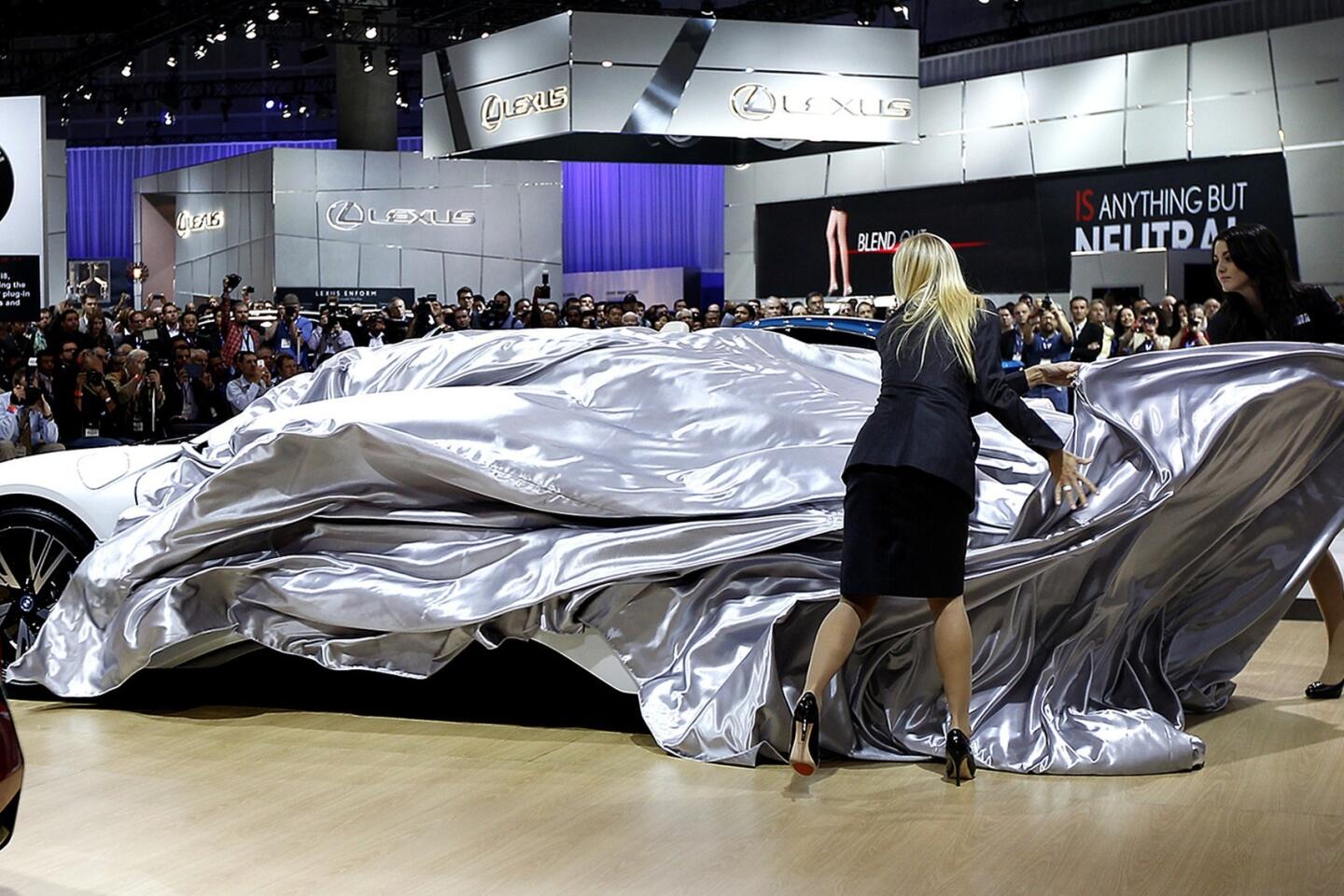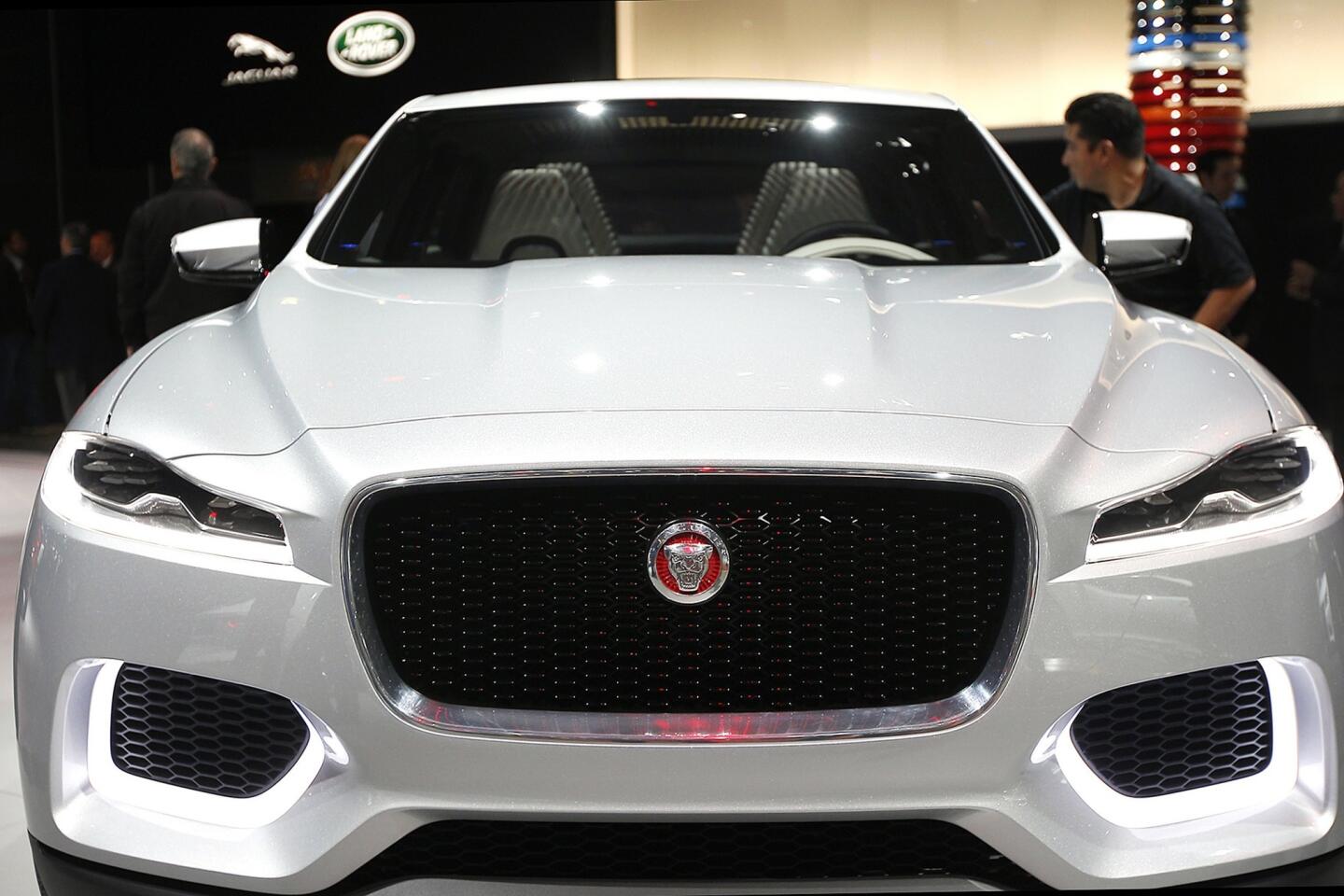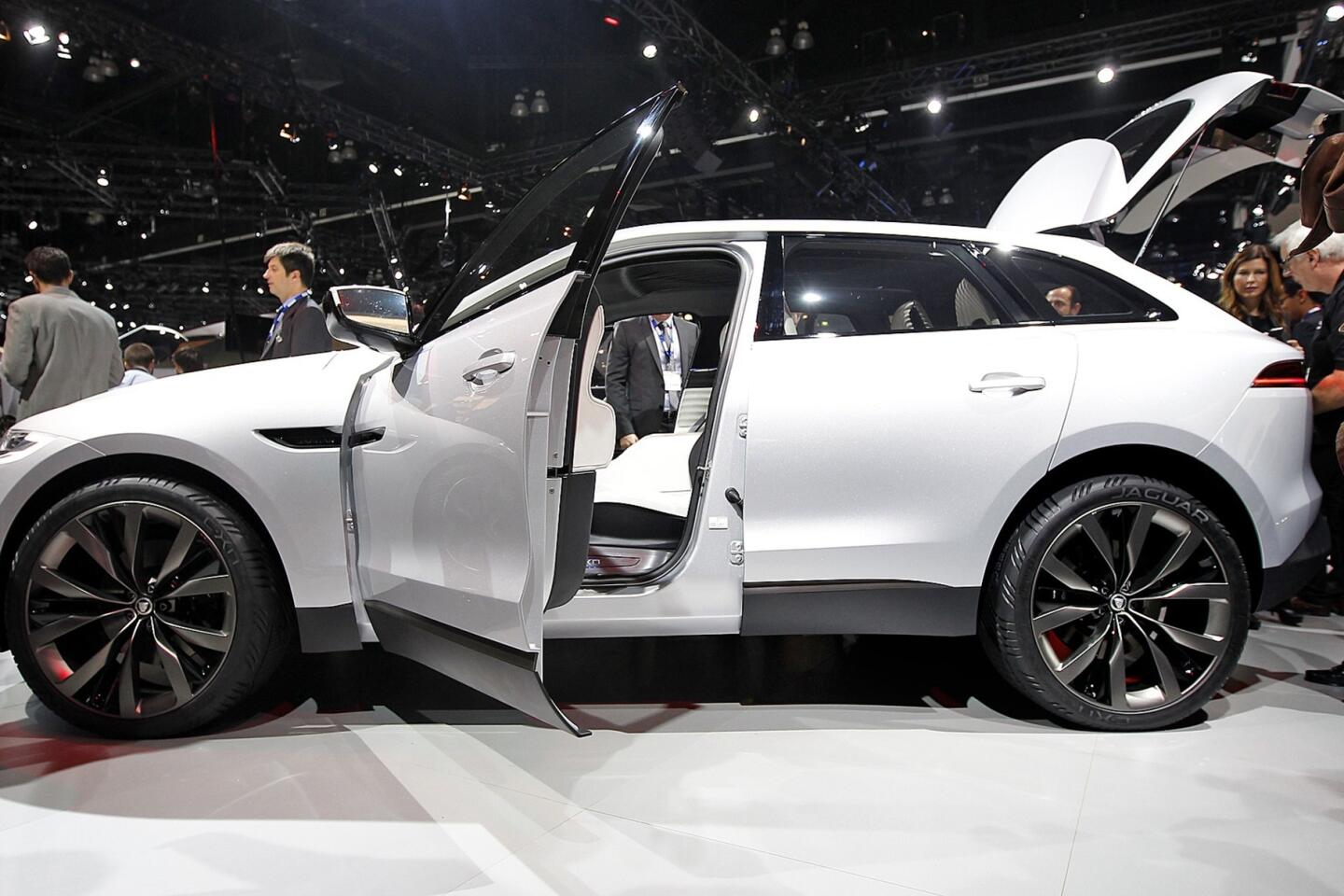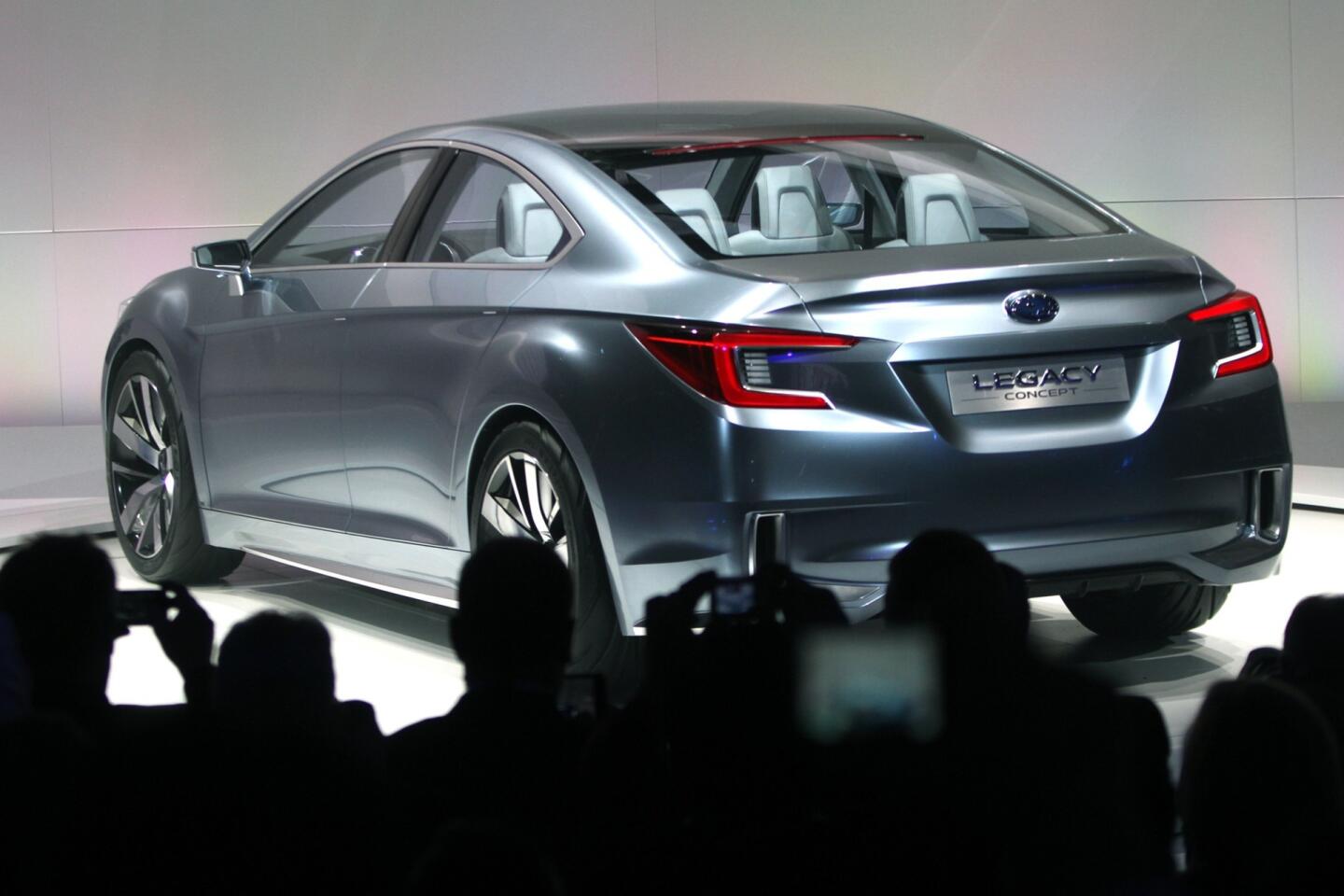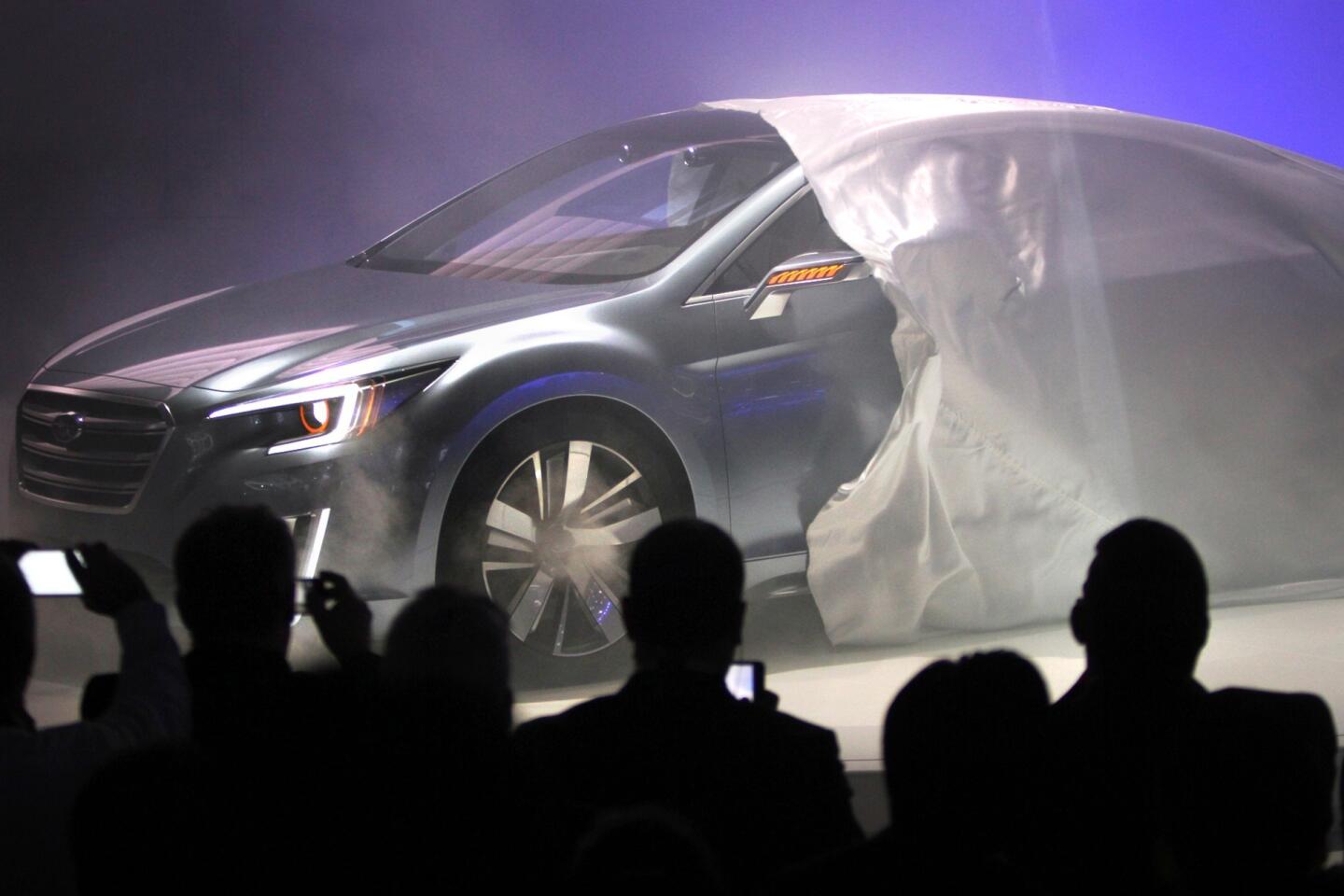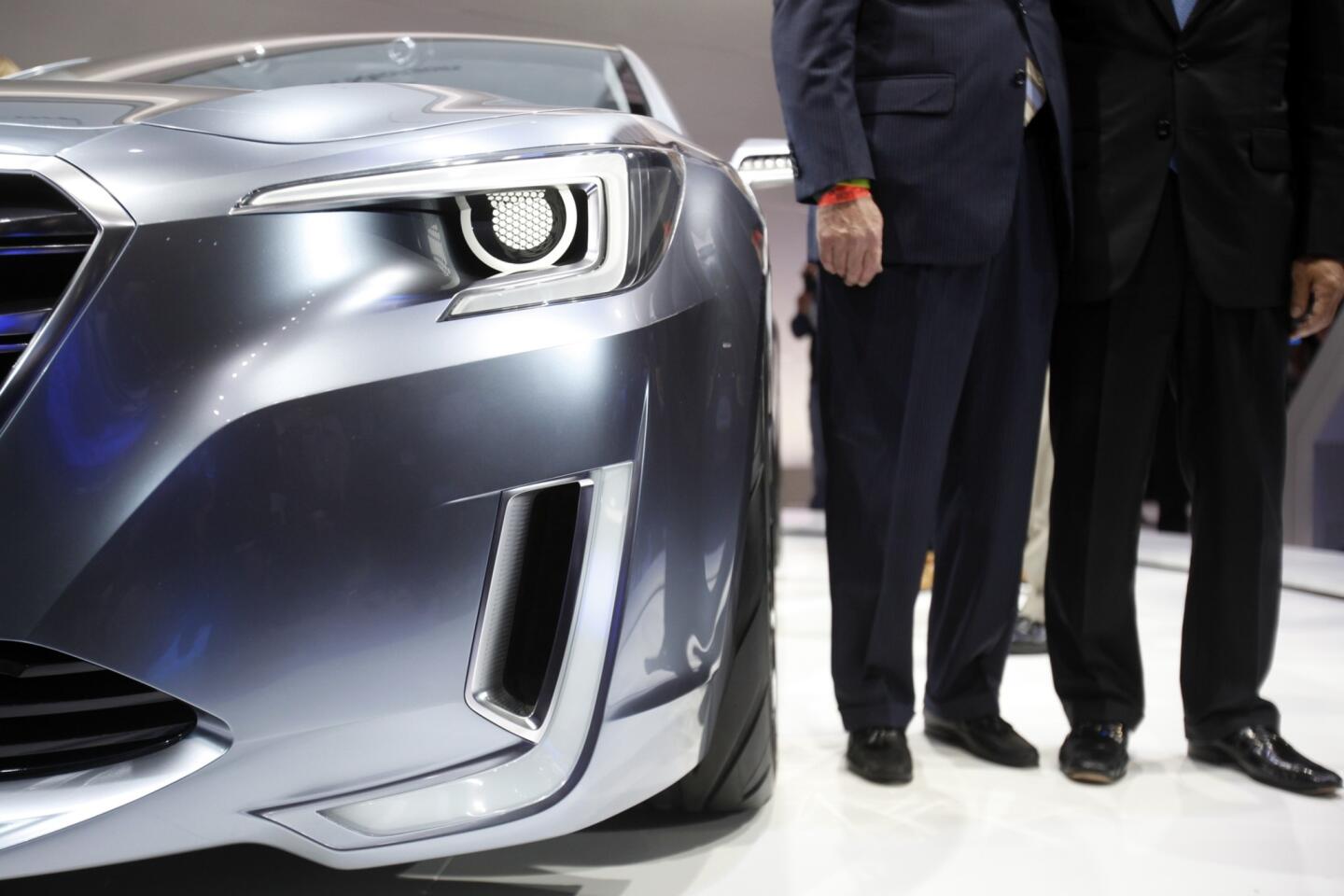L.A. Auto Show: LTE coming to cars in 2014
Car markers are starting to connect vehicles directly to high-speed cellular data networks, bringing Google Streetview, Facebook and other apps directly onto on-board screens.
Audi confirmed Tuesday at the Los Angeles Auto Show that the 2015 A3 will be the first vehicle to connect to a 4G LTE network. The company did not announce which carrier will provide the mobile service. The vehicle is expected to be available in the U.S. in April.
Older Audi models have connected to T-Mobile’s older and slower 3G network. Drivers pay either up to $450 for 30 months or $30 a month for the mobile data package.
PHOTOS: L.A. Auto Show model debuts
The 4G LTE connection could entice more consumers to subscribe and increase their spending on already pricey cellular service bills because 4G’s faster download speed can run more sophisticated apps. Imagine watching Netflix on screens in the backseat or even having in-car cameras transmit video of an accident to emergency responders.
Though many drivers already navigate using apps on their smartphones, some could find it easier to have the similar options directly on the screens built into the car.
“There’s certainly a convenience factor,” said Thilo Koslowski, Gartner’s automotive technology analyst. “Consumers are coming to expect mobile broadband everywhere, and vehicles can’t stand isolated from that.”
Audi’s current Connect service through T-Mobile also allows up to eight other devices such as tablets and laptops to tether to, or piggyback on, the service without any usage limits.
In contrast, turning a smartphone that has T-Mobile service into a mobile hotspot typically incurs an extra charge after a limited amount of usage. Rather than allowing the car to piggyback on a smartphone data plan, cellphone operators see a potentially large revenue stream by requiring a separate data plan for vehicles.
FULL COVERAGE: L.A. Auto Show 2013
General Motors has previously said its 2015 models – to be sold beginning in late 2014 – will have the ability to subscribe to AT&T’s LTE service. AT&T also has deal with Nissan to eventually power its infotainment system.
Ford models that have Sync with MyFordTouch can power a mini wireless Internet network through USB tethering if someone plugs in a smartphone or USB broadband stick. Alternatively, the USB broadband stick could be inserted into a port on a laptop to build a hotspot.
In Europe, BMW has a similar offering where consumers may stick a SIM card into a USB-based stick that’s bought as an add-on. When plugged into the car, the USB stick powers up a short-range LTE network to which other devices could connect. A BMW Group spokesman said this week that plans had changed and that the LTE Hotspot service will not be available in the U.S. “for the time being.”
Separately, Verizon this week began selling a $199 LTE device that plugs into a car’s diagnostics connection. Fully using the device requires a Verizon service plan, which starts at $30 a month, and a $5-a-month Delphi subscription.
Like traditional hotspots, the Verizon device re-transmits the LTE connection over Wi-Fi so that other laptops, tablets and smartphones can connect to the Internet. The device also downloads data from the car about the vehicle’s health and driving history. The information can be accessed through a smartphone app or website. In addition, the app can act as a key fob to lock/unlock the car or can help locate the car.
Chrysler vehicles equipped with Uconnect pull data from the Internet from websites such as Yelp through Sprint’s 3G network. UConnect is currently free, and future pricing has not been announced. To turn the car into a hotspot requires a subscription of up to $35 a month. A Chrysler spokesman did not immediately respond to a question about when UConnect might support LTE.
